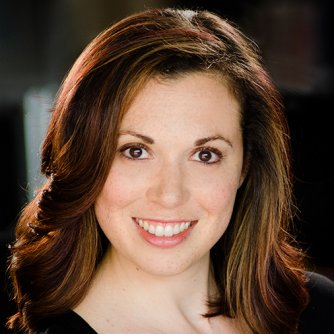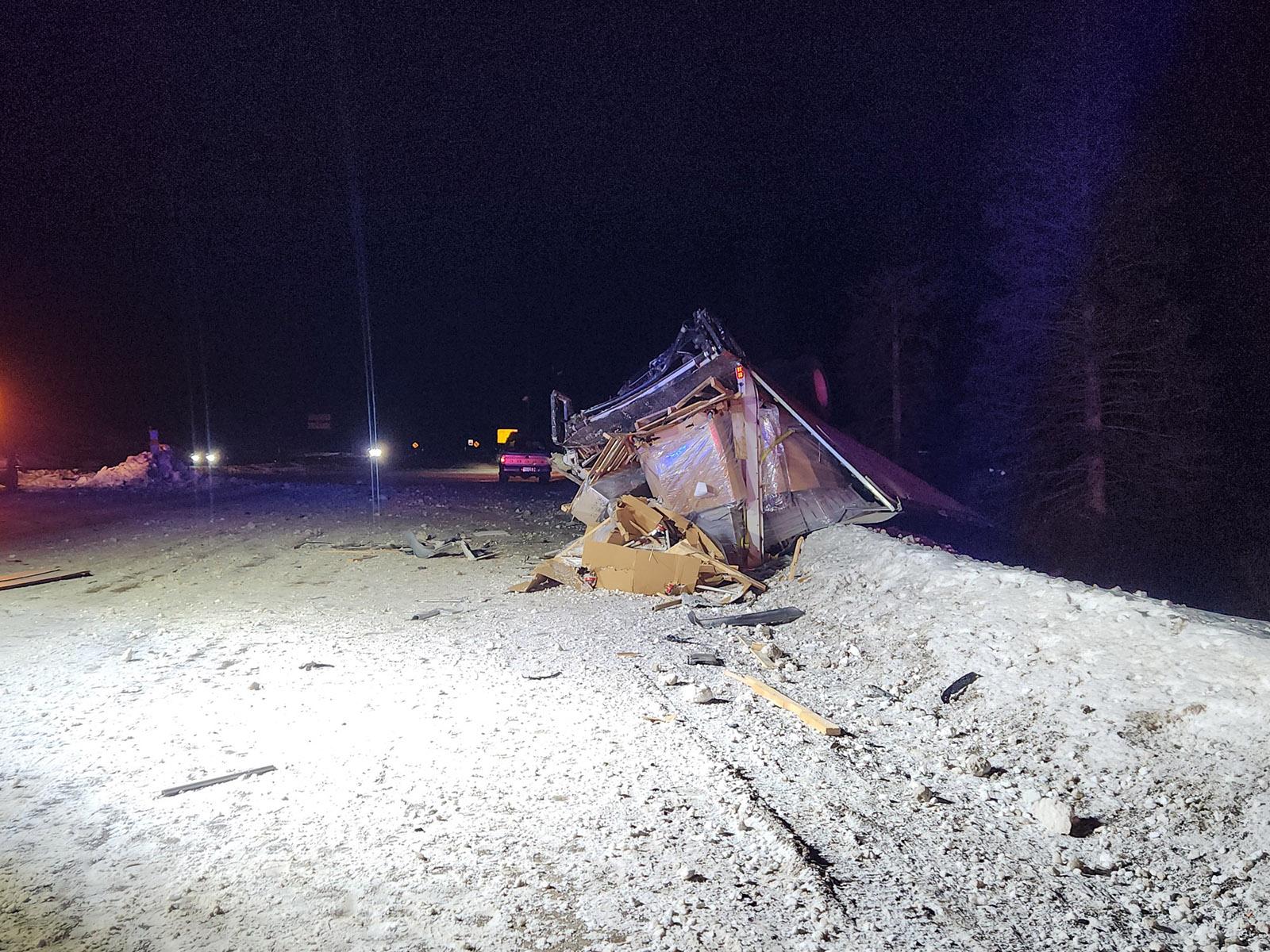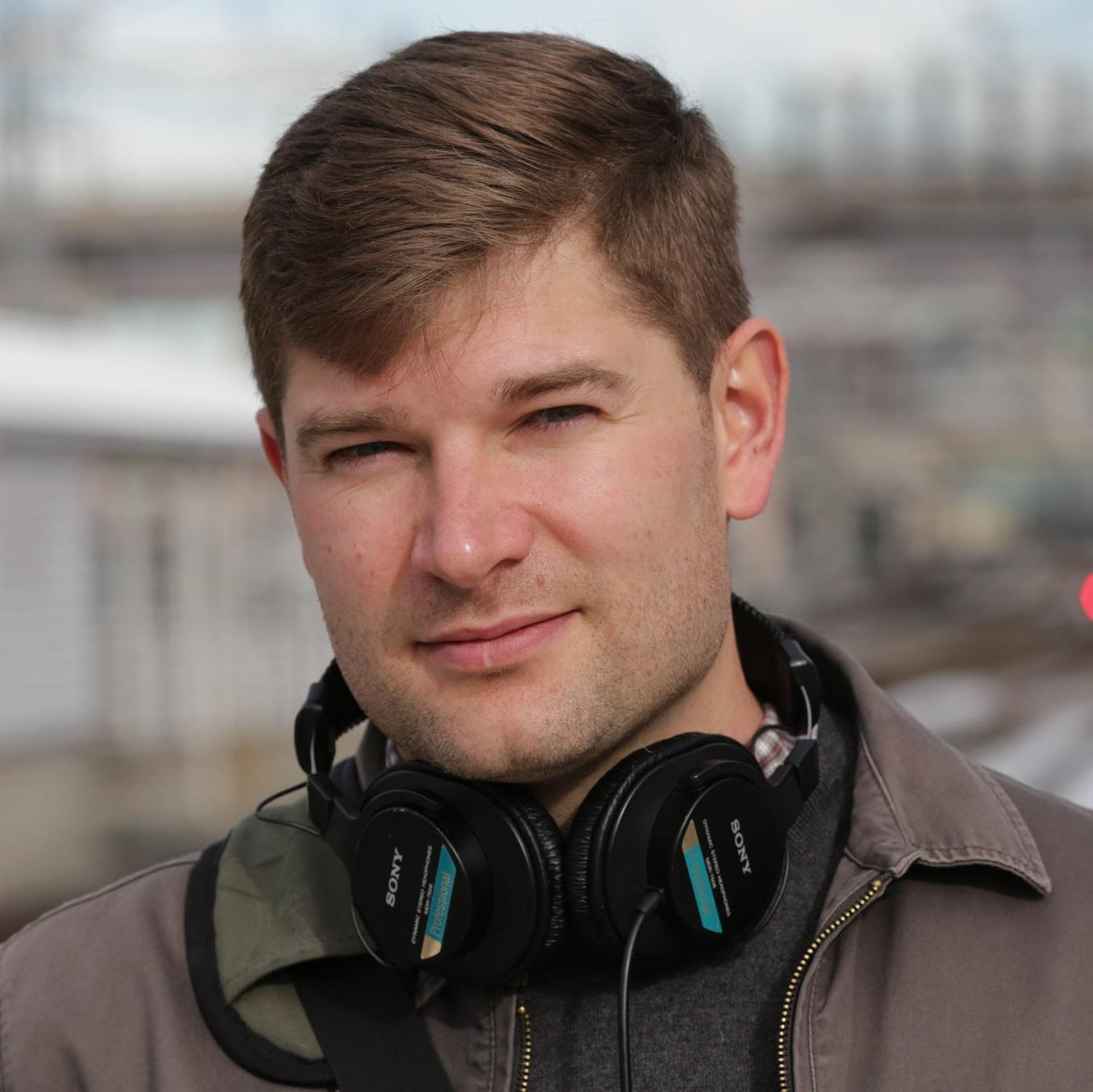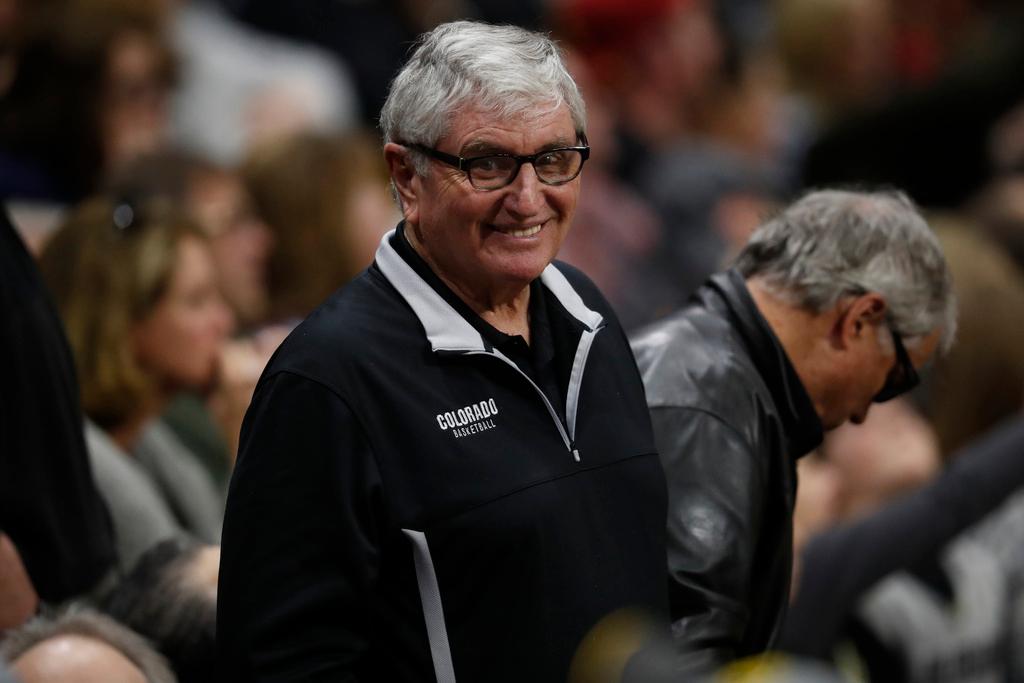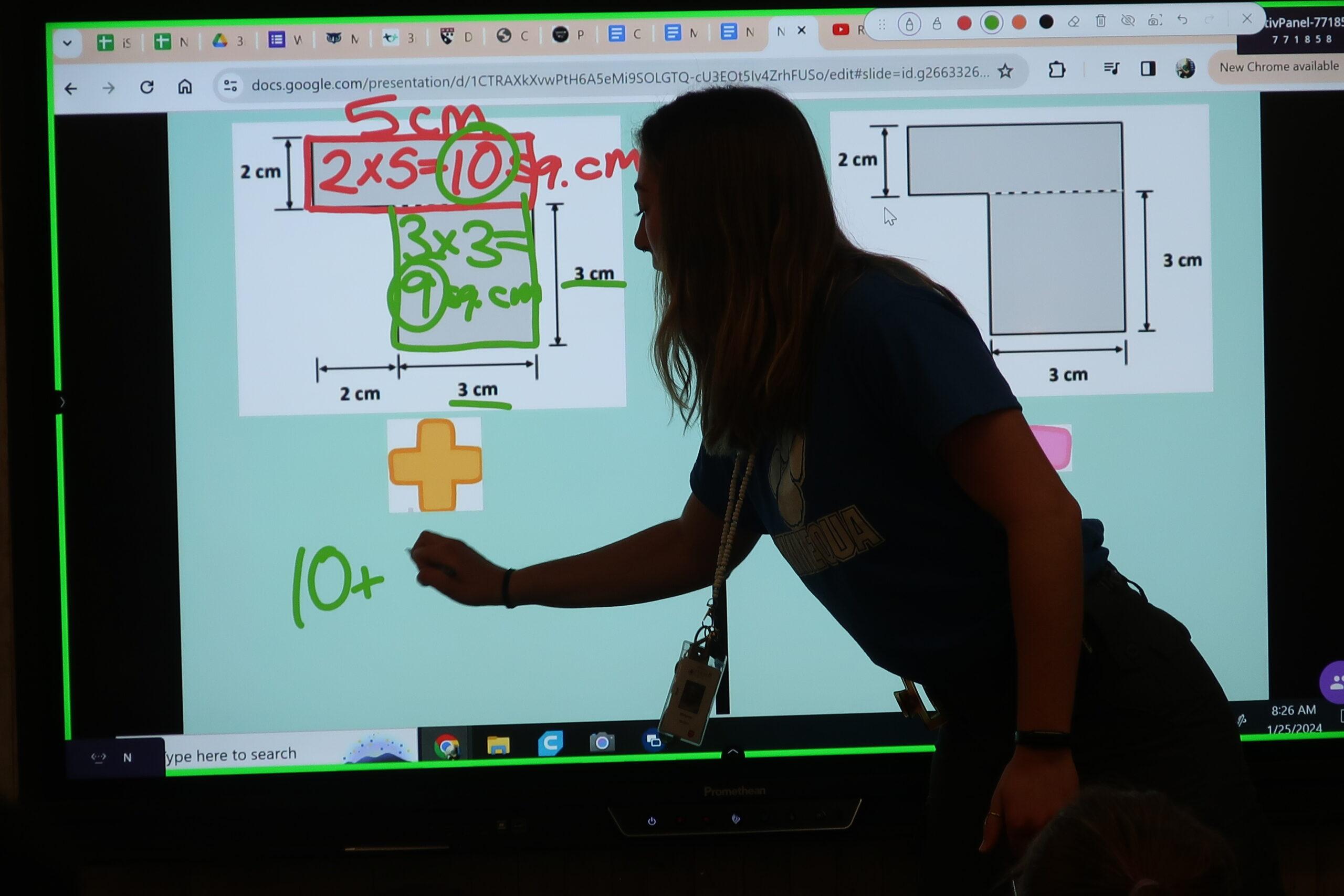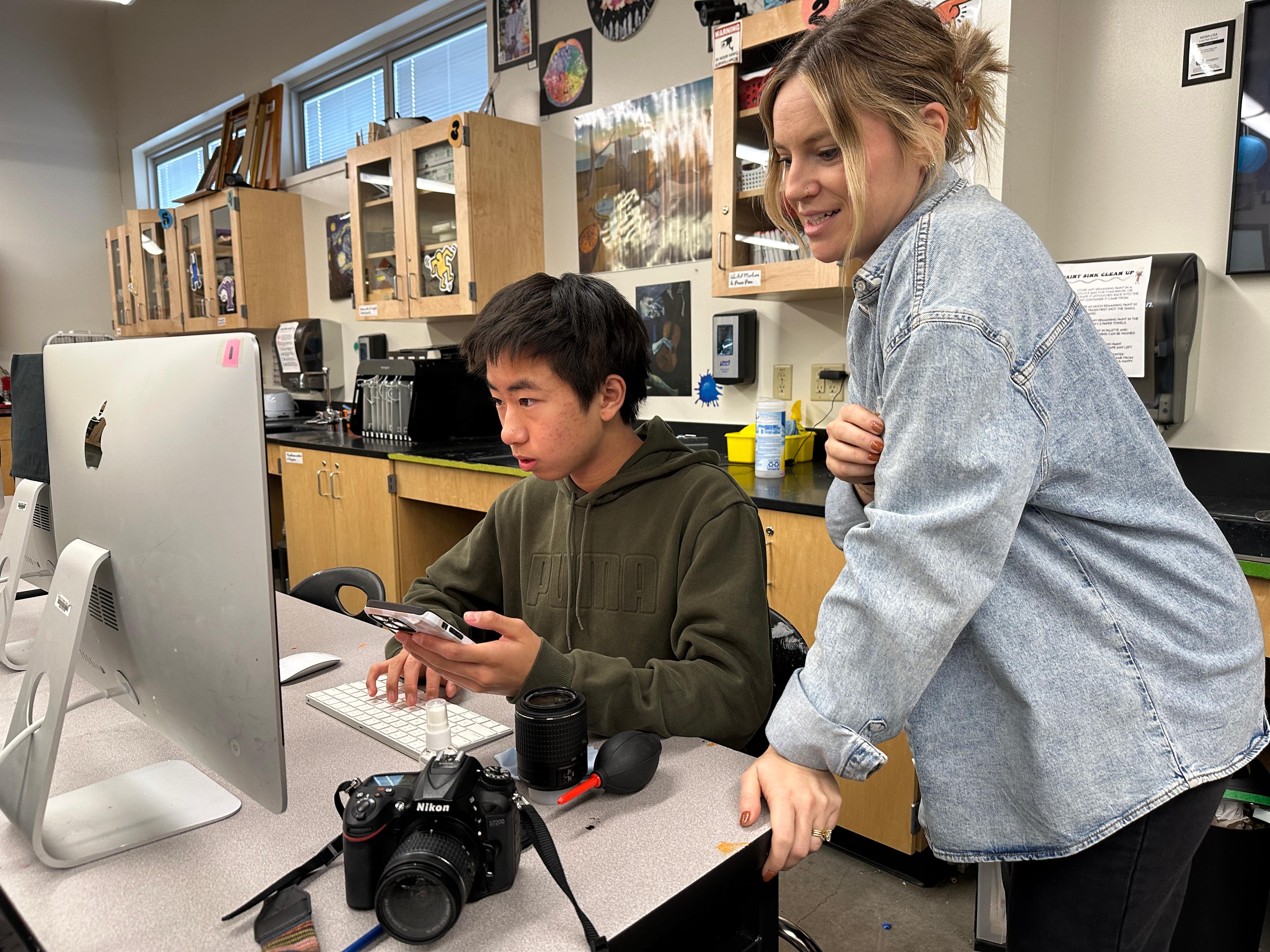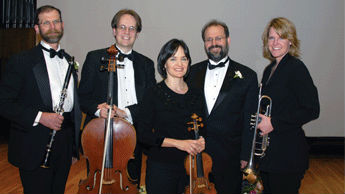
Modern-day screen actors have the ability to convey their emotions through dialogue or verbalized gestures -- laughter shows joy, sobbing portrays sadness and blood curdling screams evoke terror.
Silent film actors didn’t have the same luxury.
Early moving pictures relied on their musical scores to help bring actors’ muted gestures to life.
The Mont Alto Motion Picture Orchestra specializes in reinvigorating and creating these film scores.
Friday night, the Louisville-based ensemble aims to resurrect the suspense and mayhem of director and producer Alfred Hitchcock’ 1929 psychological thriller “Blackmail” through music at a cinematic presentation at the Rialto Theater in Loveland.
The score consists of a patchwork of existing pieces from the early 1900s, which the ensemble has arranged into a musical accompaniment for the film.
“Blackmail” was Hitchcock’s final silent film. The “Master of Suspense” also reworked the footage to make his first talkie -- or “sound film with synchronized dialogue.”
It tells the story of Alice White, a young woman who kills a man in an act of self-defense. Her boyfriend, a Scotland Yard detective, is assigned to the case and quickly learns of White’s involvement. The tension heightens when a stranger blackmails the couple.
“The movie plot centers on three people who know something about a crime, but don’t know all of the details,” Mont Alto pianist and composer Rodney Sauer says. “So the score needed to have a lot of tension.”
Originally formed as the Mont Alto Ragtime and Tango Orchestra in 1989, the Louisville ensemble first played dance and salon music of the early 1900s.
In 1994, Sauer came across a collection of silent film orchestra music at the University of Colorado Boulder that belonged to Al Layton, a Colorado musical theater director in the 1920s.
Sauer had little experience with silent cinema or its orchestration prior to his discovery. But the collection inspired him to form the Mont Alto Motion Picture Orchestra, a five-member chamber version of the larger ensemble.
Colorado Public Radio caught up with Sauer in anticipation of Mont Alto’s performance to discuss scoring for silent films such as “Blackmail.”
CPR: What was your approach to creating the musical soundtrack for Hitchcock's "Blackmail"?
Rodney Sauer: We were asked to present three different Hitchcock silent film scores at a festival that included all nine of his surviving films. I wanted to approach each film in different ways to give our three scores their own “sound,” while still using our standard technique of weaving together only historic photoplay music to create authentic scores. With a spooky film, we’d likely play a number of moody, almost ambient pieces. For “Blackmail,” the plot centers on three people who know something about a crime, but don’t know all of the details. So the score needed to have a lot of tension. We used many odd, angular pieces with a non-traditional plays on harmony and melody to convey this.
CPR: Tell me about some of the specific songs you used for “Blackmail.”
Rodney Sauer: Most of the pieces in “Blackmail” are forgotten songs, but are little gems of the photoplay music repertoire -- titles like “Into the Unknown,” “Quandary,” “A Critical Moment” and “Gruesome Tales.” Towards the opening of the film there is a lighter scene in a tea room. I selected some 1920s popular music to accompany that sequence, such as the blues song “He’s a Good Man to Have Around.” In another scene, one of the characters wonders around the city in a daze. For this, I decided to improvise a piano solo, to capture that sense of shock and curiosity.
CPR: How do you and Mont Alto typically approach scoring a silent film?
Rodney Sauer: I watch the film first, then start selecting music for each scene. Sometimes it’s clear that a particular character or situation requires a theme, which will recur throughout. I score the more obvious and important scenes first, then choose “filler” pieces to complete the film.
CPR: You use the term "photoplay music” to describe musical scores of the silent films in the early 1900s. Can you explain what “photoplay music” is?
Rodney Sauer: Photoplay music is music that was composed and published for movie musicians. It is rooted in the classical “Romantic” tradition, and is largely tonal, though occasionally a piece uses whole-tone scales or unusual chords. These pieces were not written for any specific film, but were intended to become part of a musician’s library, and used for film score compilations. The earliest photoplay music was written for pianists in the early teens, and were small books of short pieces with names like “Hurry,” “Pathetic,” “Death Scene,” “Oriental Veil Dance” and so forth. Within a few years, music was published for orchestras. The main purpose is to be evocative of a particular mood, action, or locale. When you find a piece called “Hurry” or “Allegro Vigoroso” you expect a fairly exciting scene. But a piece called “In an Opium Den” or “The Temple Dancer” can be quite strange. As films developed and became longer, the musical selections became longer and more sophisticated. 1916 through about 1927 were the most productive years for composers in this genre.
CPR: What was the standard instrumentation for photoplay music?
Rodney Sauer: The instrumentation varied widely, depending on the budget and talent available to the movie theaters. In large cities, like Denver or New York, the orchestras reached symphonic sizes. In smaller towns, the orchestras were smaller. The music was carefully arranged so it would work with a variety of sizes of orchestra. I’ve presented our score for the 1926 silent comedy “The General” with solo piano, with the Mont Alto quintet, and with a 30-piece orchestra, using the same music each time.
CPR: How did talkies, films with dialogue and sound effects change music for film?
Rodney Sauer: The music became standardized. Before that, every theater showing a particular film could have used different music. Talkie music, although usually very well played, was recorded poorly at first. So, in some ways, the theater-going experience was cheapened. Also, as dialogue and sound effects became more important, music lost its primary spot in the presentation and became the third-most important element of the sound track.
CPR: Can you expand on the three different types of film scores: improvised, versed composed and compiled? What are the advantages or disadvantages of each?
Rodney Sauer: Most present-day talkies use composed scores, while most silent film presentations use improvised scores. The compiled score has largely disappeared, with some notable exceptions -- “2001: A Space Odyssey” is technically a compiled score, as it uses classical pieces like Strauss’ “Also Sprach Zarathustra” and “The Blue Danube Waltz.” A composed score is advantageous because of its exact synchronization and each musical theme is construction to match the tone and action of a scene precisely. But it takes a great deal of time and effort to create and record such a score. Most silent films did not have the luxury of spending weeks on its score. In an improvised accompaniment, the musician often makes up the score as the audience is hearing it. So the quality of the score depends completely on the capabilities of the musician. In my experience, improvised scores can sometimes suffer from the performer’s exhaustion. Towards the end of a long film, it’s easy to get in the habit of being repetitive and less creative than you were at the beginning. The biggest advantage of a compiled score is the speed with which it can be prepared. The music is already written and arranged, so you just have to select and edit it. You can score an entire film in a day or two. But, after many scores, you can get into the habit of reusing the same pieces.
Listen to some of the tension-filled tracks included in Mont Alto Motion Picture Orchestra’s score for Hitchcock’s thriller “Blackmail” by clicking the audio above.
